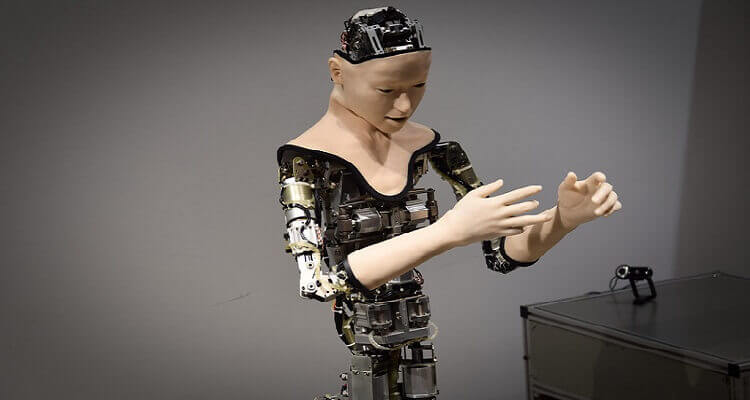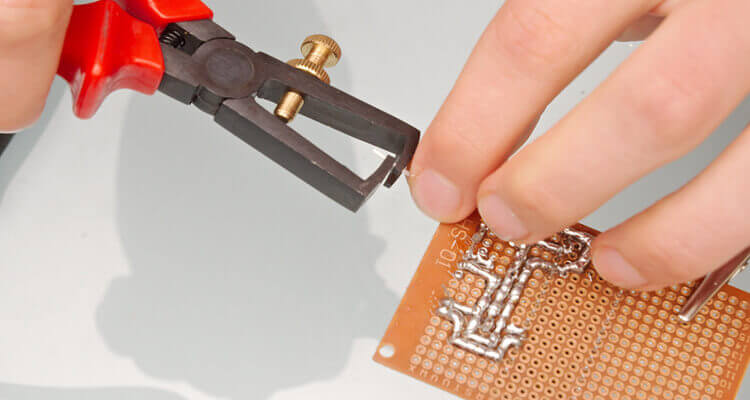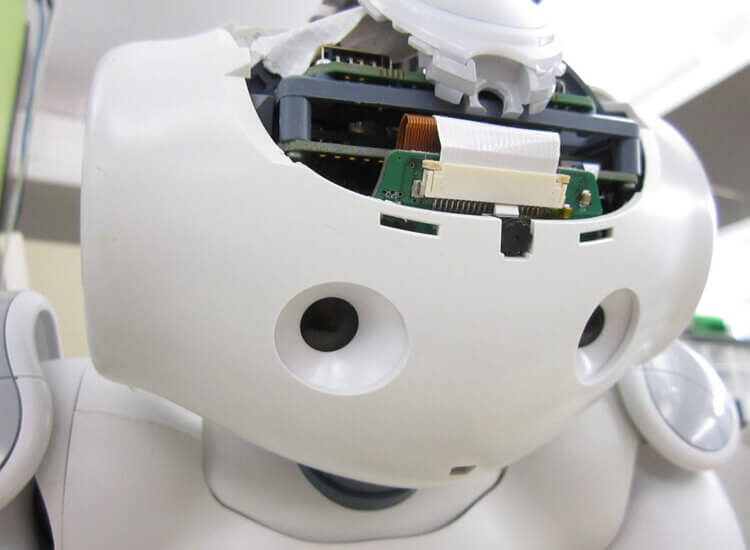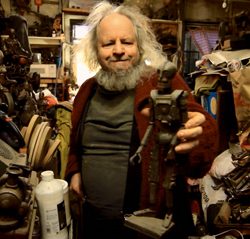The Rising Demand for Sexbot Repair Services Is Creating Lucrative Career Options
Many are making sexbots—but who’s going to fix them?

HELP WANTED: Certified A4+ technician with at least 5 years+ experience in intimate robotics repair and refurbishing. Bonus points for skill in working with reactive and mnemonic smart materials, PLUS G2 level AI negotiation and counseling. Fun work environment with many opportunities for advancement. Because of possible distractions, as well as unauthorized contact with products, no enthusiasts should apply.
By the number of companies who are developing and manufacturing them, which seems to be increasing more and more each day, one thing is very clear: love dolls and sex robots are extremely popular.
This is not even considering the growing rise of brothels where customers can have intimate interactions with them—without having to plop down the hefty costs of buying a synthetic lover outright.
But one component of this skyrocketing industry that, so far, hasn’t really been addressed is what happens when one of these state-of-the-art playthings breaks down.
Putting it simply, here’s a new job that not only will become a mainstay career in the future. It’s also very much really needed in the present.
Can you fix my doll?
Currently, sex doll manufacturers don’t offer repair service for their products. Realdoll, one of the biggest in the biz, does offer a repair kit for do-it-yourselfers, but as a company policy they don’t allow customers to send one of their dolls back, citing that they can’t “due to health concerns for our employees.”
While some advertise repair services on doll enthusiast’s sites and forums, there doesn’t seem to be a company or person who puts themselves out there with a fix-it service.
This wasn’t always the case, though. For ten years, Slade Fiero—an artist as well as a doll designer and enthusiast—advertised his repair services on the web.
Though since retired, Fiero did share some of his experiences as a sex doll repair person with The Sun, particularly how disturbed he sometimes felt at the way the dolls had been treated.
“I’ve seen plenty of dolls that weren’t taken care of,” he said. “Men suck on a lot of different levels.”
Fiero further pointed out that the treatment of the hyper-realistic dolls reflected on the owners, and—rather wisely—that “Even when it comes to dolls, having respect is important considering what it represents.”
He even commented on the popular question regarding if somehow sex dolls might threaten or even replace human sexual interactions.
“While the dolls do serve a purpose, I don’t think sex dolls or robots will become people’s ideal sexual partners. Nothing can or will replace human touch, ever.”
A future career

At present, a majority of animatronic love and sex dolls are still rather simplistic—technologically speaking, that is. True, you have some like the controversial Samantha, who needs to be “seduced” before she’ll sexually respond. Or Realdoll’s Harmony, who sports an impressively responsive artificial intelligence. But for the most part, their hardware, and even their software is still pretty basic.
However, it’s just a matter of time before all that changes. Looking at how the industry has exploded in just a few years, in popularity as well as sophistication, gives a pretty good indication that we are fast approaching a kind of gynoid singularity. The end of which could lead to robots, to use a quote from Blade Runner, that could be “More human than human.”
And so back to our question: who’s going to fix these robots when they break down?
Someone has to do it—maybe you?

Automation taking jobs is nothing new, but it has become an even more essential discussion as robots, artificial intelligence, and other developments break out of the laboratory and into the workforce.
While jobs will be lost many more will be gained—and one of the big ones is maintaining and repairing all those robots, including the ones we might have fun with in our bedrooms.
No insult to Slade Fiero’s skills, but this new future career could be not just artistic, repairing the physical appearance of sex dolls. It could also involve microelectronics, 3D part printing, and even dealing with malfunctioning software.
Then there’s something that Fiero touched on: fixing a sophisticated sexbot might also involve a little extra repair—not just of the device but the device’s owner.
A bot, for example, that comes in with excessive damage—and whose artificial intelligence reports on disturbing mistreatment—could be a warning sign: one that might have to be reported a mental health expert. This could be especially true if the damage, as Fiero said, shows a lack of respect for what the sex doll represents—a real-life human being.
There’s even the not-so-far-off concept that this repairperson when dealing with the doll’s AI, would be less of a mechanic and more of a counselor. After all, if artificial intelligence is sophisticated enough it might need less debugging and more electronic therapy—especially after being abused.
Heal thyself

Finally, the repairperson themselves would have to not just be adept with their hardware, software, and therapy skills but also in taking care of themselves.
Dealing with broken, physically and mentally, sex dolls day after day, possibly encountering signs of brutal sexual abuse, would be challenging for anyone—even a professional with years of experience.
Because of this, here’s hoping that this new kind of job, whether it appears today or in a few decades, is one that recognizes that healing can be is a key component—for the owner, the sexbot, and especially for the person fixing what was broken.
Image sources: Raita Futo, Adreson Vita Sá, Frédéric BISSON, Robot Carnage, Jeff Eaton
Leave a reply
You must be logged in to post a comment.

















